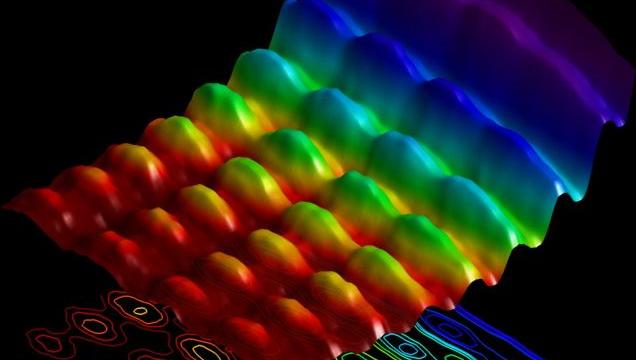Several weeks ago, the internet lit up with the colourful image shown above, accompanied by headlines claiming that physicists had accomplished the extraordinary: We’d finally managed to see light as both a particle and a wave at the same time. But…this isn’t exactly true.
As Ben Stein of Inside Science News explains, what the study recently published in Nature Communications actually did was show us a bunch of photons — the elementary particles of light — imaged together, with some acting as particles and others acting as waves.
Quantum physics, the branch of physics that brings us mind-bending concepts of multiverses and particles that exist in two places at once, also suggests that every object in our universe, on its most elementary level, has a dual nature. Light, for instance, can act as either a particle or a wave depending on its environment. But until now, physicists have only been able to image light in one guise or the other.
Now, scientists have managed to image photons acting like particles and waves at the same time. But! We haven’t imaged the same photons acting like particles and waves simultaneously. Stein breaks the experiment down for us:
The researchers trapped a wave on a super-thin “nanowire” with a thickness measured in nanometres or billionths of a meter. It’s a standing wave, like a vibration of a guitar string, with peaks and valleys that stay fixed in the same position.
To be precise, it’s not strictly a light wave as the headlines suggest. It’s actually a hybrid of a light wave, dancing on the wire, and an electromagnetic wave slithering on the wire’s surface, produced by charged particles moving along the wire. They’re kind of joined at the hip. This composite object is known as a surface plasmon polariton and you can read more about it on Wikipedia.
For simplicity, let’s consider it just to be a light wave. For the purposes of this discussion, it doesn’t matter if the wave is made of photons or some hybrid object. It acts like a wave.
But when the researchers fired electrons at the nanowire, the electrons sometimes sped up by specific amounts, indicating that they absorbed individual photons from the wire. How can light behave like both waves and particles at the same time?
The answer is that the light was made of many different photons. Each of them behaved in a separate way. The researchers observed some photons acting like particles, and others acting like waves. Imaging both types simultaneously is what was done for the first time in their experiment.
Still a very cool study, just not as Earth-shattering as we thought. You can read Stein’s full explanation over at Inside Science.
